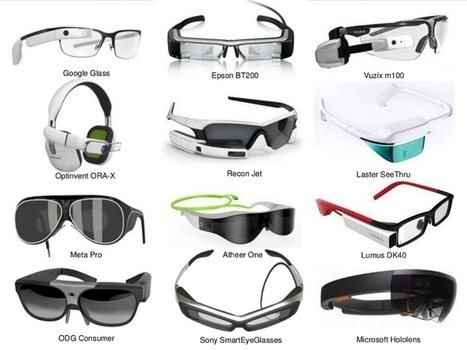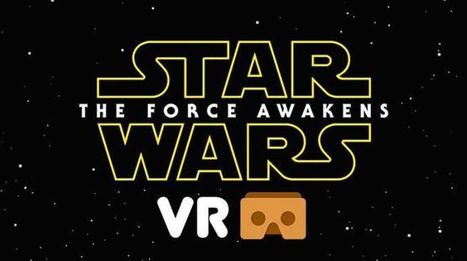Dopo la bufera per il prezzo di lancio di Oculus Rift, qualche considerazione a freddo sulle esperienze virtuali disponibili oggi. E su quelle che ci aspettano
Tanto tuonò che piovve. Virtualmente, sia chiaro. Mentre rimane difficile sapere se sarà Oculus Rift a traghettarci in massa verso lidi immersivi a 360 gradi, è il prezzo dell’headset virtuale di Facebook – 599 dollari per gli States, 742 euro tasse e spedizione incluse dalle nostre parti – a produrre la prima rivoluzione fra il pubblico, in subbuglio dopo l’annuncio: un costo non alla portata di ogni tasca, cui va sommato quello di un computer dai requisiti minimi non proprio minimali, quantificabili fra i 1000 e i 1500 euro aggiuntivi.
Per farla breve, oggi il biglietto per immergersi nel futuro sintetico costa quasi 2mila euro. Confort di alta gamma non compresi nel prezzo.
Eppure, nonostante anche le impressioni di Wired non siano univoche – si passa dall’ottimismo dell’edizione americana ai nostri toni più prudenti – pare che tutti concordino sul fatto che liquidare il Rift spacciandolo per l’ennesima chimera del virtuale sia una bocciatura quantomeno frettolosa.
E non tanto perché sulle superbe potenzialità economiche dell’infante, analisti e attori in gioco convengano (Cta e Gfk prevedono che, nel solo 2016, il fatturato globale della VR toccherà i 540 milioni di euro, una crescita del 440% anno su anno); piuttosto perché a prescindere dal Rift, dal Vive Pre (in uscita ad aprile e con un prezzo che le ipotesi vorrebbero sui 1500 euro), da PlayStation VR (800 euro secondo un leak di Amazon Canada, smentito da Sony), ebbene a prescindere da qualsiasi visore magari ancora da progettare, una e una sola cosa è certa: il nostro domani sarà virtuale. E almeno aumentato.



 Your new post is loading...
Your new post is loading...













La quotidianità sarà sempre più pervasa da contenuti alternativi o integrati di qualsiasi tipo, ma comunque immateriali. Si tratti di un altrove – VR –, o di qualcosa sovrapposto al circostante – AR -, pensare a un mondo in cui materico e digitale siano separati sarà retaggio d’altri tempi. Non è un caso aumentino gli psicologi che, come Matteo Lancini nel suo Adolescenti navigati (Erickson), fanno notare quanto i più giovani percepiscano le propaggini digitali come un continuum con la propria identità, meglio un evidente “prolungamento del sé”.
Lungi dalle premonizioni, la cosa appare una logica conseguenza di quanto testato negli ultimi 2 anni. E soprattutto di quanto fatto intravedere da aggeggi ancora acerbi e dall’appeal massivo tutto da dimostrare.
Vero, Oculus potrebbe non essere il nostro Virgilio fra le lande virtuali, ma Caronte lo è di sicuro. Senza gli occhialoni concepiti dal 23enne in infradito di Long Beach, lungi dal tornare fra i trend tecnologici più chiacchierati del mondo, realtà virtuale e aumentata sarebbero rimaste quella chimera pseudo-scientifica di mezzo secolo fa, tradotta in hardware da esperimenti grotteschi. O un’oscura tecnologia maneggiata tuttalpiù dall’esercito e, ça va sans dire, dall’industria del porno.
Ecco perché qui di seguito raggruppiamo le 5 esperienze virtuali più interessanti al momento. Non tanto le più belle e meglio realizzate, sia chiaro: piuttosto, quelle che anche in fieri dimostrano come potranno trasformarsi alcune nostre certezze.
Che i videogiochi predicano il futuro si è ribadito più volte. È dunque opportuno partire da loro per immaginare l’impatto delle nuove tecnologie visive, soprattutto perché proprio dall’ambito ludico queste hanno mosso i loro nuovi passi verso la conquista del mondo. Nondimeno, perché proprio a una frazione di giocatori Luckey si è detto interessato almeno nella prima fase di diffusione dei suoi occhiali.
Se e quando quella porzione possa diventare la totalità per poi estendersi a tutti è il dilemma dell’industria. E i pareri sono antitetici, come dimostrano da un lato gli entusiasmi di Sony, Valve, Microsoft e pure Google, e di contro la reticenza di colossi come Electronic Arts, che per almeno 2 anni, ha dichiarato, non crederà ad alcun miraggio virtuale.
Tant’è, già oggi titoli come l’italiano Assetto corsa, o la simulazione spaziale di Frontier Developments, Elite: Dangerous – attualmente la miglior esperienza fruibile via Oculus –, sono la prova di come generi classici possano rinascere grazie a un visore VR, e offrire esperienze senza precedenti né paragoni in quanto a immersività, divertimento e percezione.
Sembra allora già doveroso criticizzare l’impatto percettivo di “videogame a 360 gradi”, soprattutto se – come per esempio dimostrato da Star Citizen – i giochi promettono di riscrivere le dinamiche di community online, o di generare transazioni reali e mercati grigi mai così verosimili, insomma di avere conseguenze più umane dell’umano: a un anno dalla sua pubblicazione, l’universo spaziale creato da Cloud Imperium già alimenta compravendite di mezzi digitali a tiratura limitata, contrattazioni su servizi in game, o forme di associazionismo sintetico “in anticipo”, delineando orizzonti relazionali tutti da scoprire. E di cui sarà necessario valutare l’impatto soprattutto sul pubblico più giovane.
Che cosa accomuna i Dallas Cowboys, i San Jose Sharks e un pilota di mech corazzati? Tutti e tre rivelano quanto domani sport e universi sintetici saranno non solo contigui, ma sempre più sovrapposti. Talvolta indistinguibili.
L’anno scorso, i mastini di Dallas sono stati la prima squadra professionistica a utilizzare caschetti virtuali per allenarsi. Merito di StriVRLabs, compagnia fondata dagli ex giocatori Nlf Derek Belch e Trent Edwards insieme con Jeremy Bailenson, attuale direttore del Virtual Human Interaction Lab della Stanford University, con lo scopo di affinare la pratica sportiva tutelando l’incolumità degli atleti. In altri termini permettendo il perfezionamento degli schemi di gioco senza che i campioni ci rimettano l’osso del collo.
Di più hanno fatto Otoy, New Deal Studios e Immersive Media, che ad aprile 2014 avevano permesso per la prima volta ai possessori di Oculus o Gear VR di vedere in diretta i San Jose Sharks contro i Los Angeles Kings da qualsiasi posto in arena preferissero, linea di porta e panchina delle riserve comprese. Il tutto rimanendo comodamente seduti in poltrona, a casa propria. Un’anteprima di come, presto, anche il ruolo dello spettatore potrebbe rinnovarsi.
A tal proposito, Rigs – Mechanized Combat League promette di essere la sintesi fra nuovi modi di praticare lo sport e tifarlo. Il tripla A in produzione per Guerrilla Cambridge non solo consentirà di vivere in prima persona e attraverso PlayStation VR una nuova disciplina in grado di mescolare calcio, pallacanestro e tiro al bersaglio corazzato – i giocatori competono pilotando robot di 3 metri super armati; a detta del suo game director, Piers Jackson, sarà uno spettacolo coinvolgente come pochi, qualcosa di divertente anche solo da guardare. Come i migliori sport “tradizionali”. Un cocktail futuribile – e buonissimo – di agonismo, tecnologia e spettacolo. La fusione definitiva di eSport ed esperienza in prima persona, si sia atleti in campo o tifosi sul divano.
Per non dire dell’intrattenimento audiovisivo
Non che per cinema o musica la voglia di essere dentro l’esperienza sia da meno. Lo suggeriscono gli accordi di Facebook con 20th Century Fox, che al lancio del visore renderanno disponibile su Oculus Store un centinaio di titoli della major (fra cui Alien, Die Hard o Cast Away), così come la volontà di produrre – si vedano il recente The Walk di Robert Zemeckis, ma anche un progetto simile dedicato a The Martian di Ridley Scott – intere sequenze fruibili a 360 gradi.
In ambito musicale, le riprese dei concerti di Paul McCartney o dei Coldplay realizzate da JauntVr o NextVr sono il corrispettivo della pulsione al protagonismo celebrata da Guitar Hero Live, ultimo nato in casa FreeStyleGames. Il titolo rinvigorisce la serie di Harmonix Music Systems titillando, attraverso l’esperienza in soggettiva e la condivisione in rete, le più intime fantasie da rockstar dell’utente. Non è un caso se lo sviluppatore si sia detto molto interessato ai futuri orizzonti della realtà virtuale.
Non solo; progetti come The Nepal Quake Project, una testimonianza da dentro la tragedia commentata da Susan Sarandon e realizzata dalla media company Ryot, dimostrano come anche il giornalismo potrebbe ricalibrarsi sul desiderio condiviso di vivere i fatti più che di sentirseli raccontare. Il “New York Times” ha già spedito ai suoi lettori un Google Card Board.
A scuola, dal medico al museo. Non che sia obbligatorio divertirsi
L’intrattenimento, in effetti, sembra solo un ambito di un futuro fatto di virtualità stereoscopica. E, a dirla tutta, nemmeno quello principale. Lo scorso settembre nientemeno che la Sorbonne ha ospitato il gotha mondiale della realtà aumentata e virtuale: studiosi, filosofi, sviluppatori, inventori. La quattro giorni, ribattezzata Immersion 2015, itinerante e da anni organizzata dal movimento internazionale immersiveeducation.org, è l’apice di una sensibilità sempre più spiccata nei confronti di quanto ar, vr, intelligenza artificiale e robotica possano produrre se integrate.
Senza toccare vette accademiche, progetti come Relive – Future of Health Award 2012, oggi gratuito su Steam -, The Apollo 11 Experience, ma anche la collaborazione fra il duo di artisti digitali Streamcolors e il museo milanese Poldi Pezzoli – che inventa un nuovo modo di visitare spazi e collezioni e che ha a che fare con la virtualità tridimensionale solo in nuce – lo ribadiscono: lungi dal farci giocare a Farmville o Minecraft in 3d, o dal trasformarci in piloti galattici con Eve: Valkyrie – il gioco compreso bel bundle iniziale di Oculus -, ci ritroveremo realtà virtuale e aumentata in ogni ambito del nostro tran tran quotidiano.
Dalla guerra al porno: con tutta la tua vita in mezzo.
E a chi, ancora scettico, non credesse allo Smart Helmet per operai del futuro presentato due settimane fa al CES da Daqri – 9 telecamere incorporate e un chip Intel per elaborare informazioni sovrapposte alla realtà lavorativa di ogni giorno – non rimarrebbe che consigliare una panoramica sulle due industrie più all’avanguardia di tutte: quella militare e il porno.
Circa la prima si rimanda a un reportage che ben più di anno fa raccontava novità da lasciare attoniti. Ai profeti del porno di certo sarà dedicata più di qualche riga prossimamente.